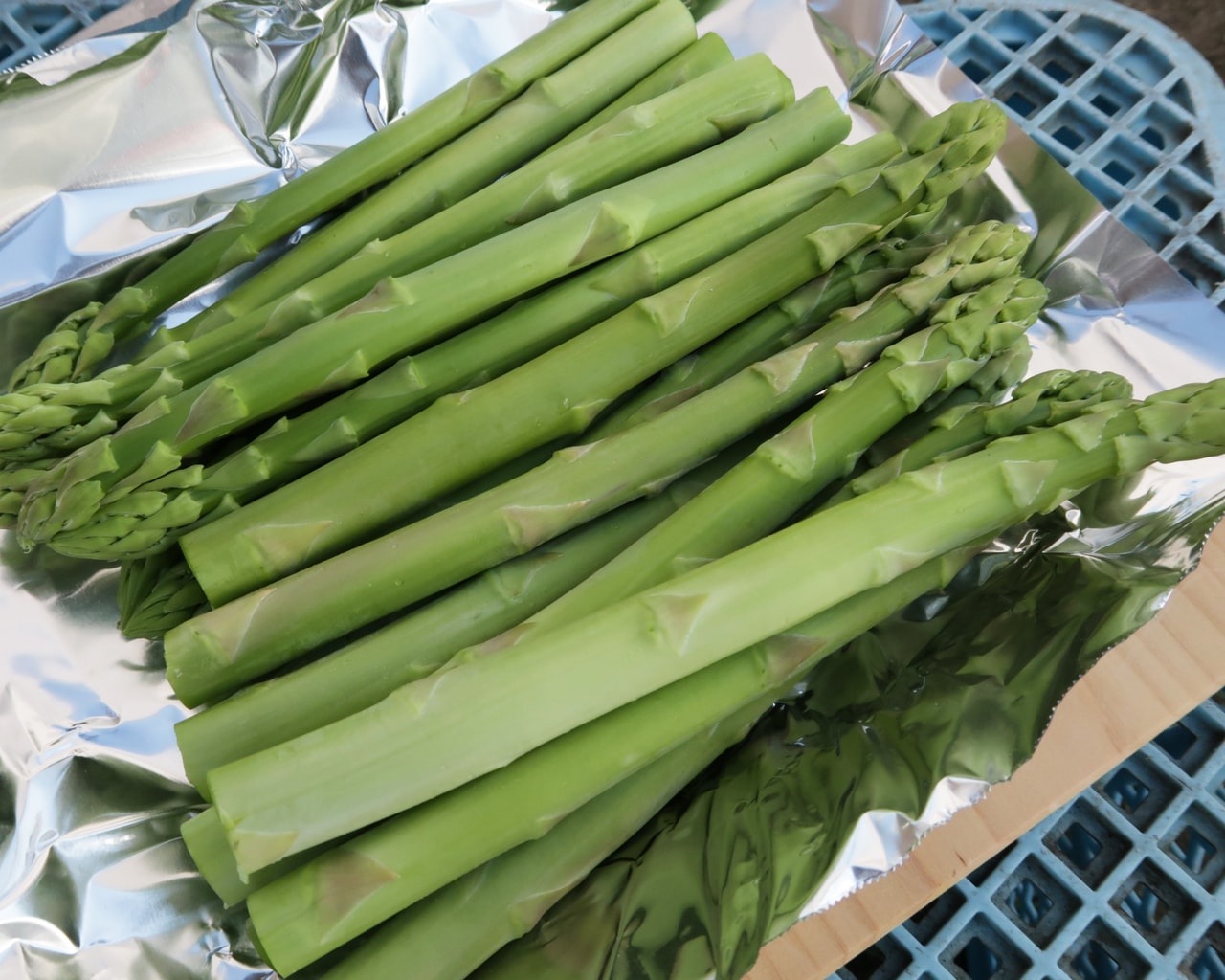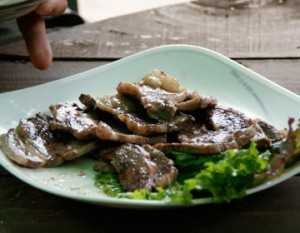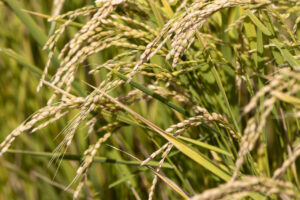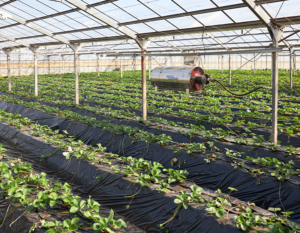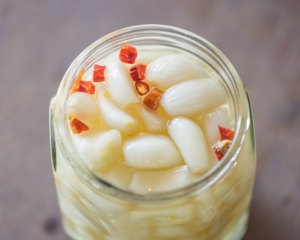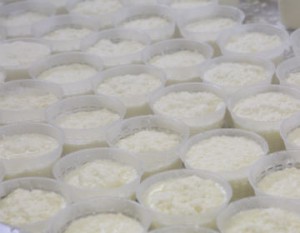In the town of Atsusawabe, richly endowed with forests and water sources,
a farmer specializing in asparagus who practices farming methods that maximize the power of the land.
They continue to produce delicious crops so that everyone can enjoy a healthy and happy life.
Jet Farm’ s asparagus is sought after by everyone from Michelin-starred restaurants to ordinary diners. Mr. Hiroki Hasegawa, the representative of Jet Farm, is earnest in his commitment to healthy and delicious food for everyone, and spares no effort in drawing out the power of the soil in Atsusawabe. How was the asparagus, nicknamed “hasepara,” cultivated?
A Town Where Many Vegetables Grow, Including Potatoes
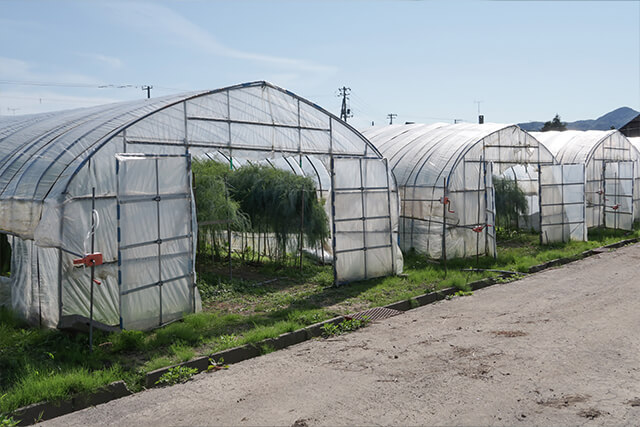
Located on the Oshima Peninsula in southwestern Hokkaido, the town of Asusabu is a town rich in nature with a thriving agricultural and forestry industry. The tourist city of Hakodate, located in the southeast of the peninsula, is approximately 1 hour and 15 minutes away by car.
While temperatures in Atsusawaabe-cho vary between day and night, the town is relatively mild and the snow melts quickly. A wide variety of crops are grown in the town, including “Asabu make-in,” a specialty crop that begins to be cultivated in early spring, soybeans, and asparagus. Asparagus, which is highly praised by chefs from all over Japan, is grown here in the town of Atsusawabe. Jet Farm, a farm specializing in asparagus, is responsible for this. Harvesting is from spring to summer.
Spring asparagus has a low sugar content, but its flavor is concentrated. The sweetness increases further through the summer.
Asparagus grown without pesticides is highly praised by top chefs.
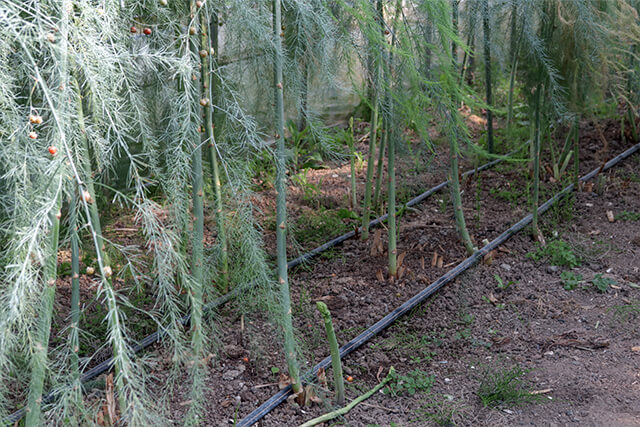
Jet Farm, a farm specializing in asparagus, started in 2012 with the wish to “make people feel better by eating delicious asparagus. The farm ‘s stance is to use no chemical fertilizers and no pesticides. They do not use pesticides, herbicides, or insecticides, and grow asparagus in compost fermented mainly from plant materials.
As a producer, I am simply helping to draw out the natural power of the land,” says company representative Hiroki Hasegawa. From Italian to French, Japanese, Chinese, and even Spanish cuisine, Jet Farm’s asparagus is loved by chefs of all genres, and chefs at famous restaurants speak highly of the asparagus. Hasegawa’s asparagus, which has won the hearts of numerous chefs, has been delivered to 120 restaurants in Tokyo alone and some 200 nationwide, and there have been inquiries from abroad as well.
Good soil” made by earthworms

The town of Atsusawabe is a basin surrounded by mountains on three sides, and 80% of the town is forested. A river flows around Jet Farm’s fields, carrying nutrients nurtured by the hardwood trees in the mountains upstream. As you can see from the soil, it is clayey and hardens where people walk on it,” he explains. When the hardened soil is dug up, it crumbles like a cookie. What emerged from the crumbled soil were earthworms.
In fact, Hasegawa continues, the holes in the soil that look like tunnels are actually the remains of earthworms.
Earthworms defecate after passing through the holes,” Hasegawa said. When the tunnel holes are filled with feces, water, air, and plant roots can pass through, and the soil is in very good condition.
Microorganisms living in the soil break down organic matter in the soil, and the reduced protein is converted into amino acids, which are then converted into nitric acid and ammonia. This is the material cycle, and once the amino acids are converted, the plants can already absorb them.
However, in the case of chemical fertilizer cultivation, nitric acid and ammonia are not decomposed and increase in number, upsetting the balance. In order to maintain the balance of the material cycle, Jet Farm uses a fertilizer made from a mixture of fish waste, bran, dead asparagus stalks, and weeds collected from their own field soil.
I’d like to complete the process on my own, but we only grow asparagus, so the balance is lost. The weeds, which are plants other than asparagus, play a major role. So weeding is hard work, but I consider it a valuable resource.”
If these are piled up for a long time, they ferment and turn black. About three days before spraying, Hasegawa mixes the bran with crushed crab shells, which are rich in chitin, and kelp meal, and leaves the mixture on the ground. Around here, we often find fossilized whale bones, and about 200 million years ago, there was a sea.
The reason for adding marine materials to the soil is to make it more compatible with the original soil.
We started with manure and now we also use chicken manure. Although manure makes asparagus very sweet, I felt that it was not suitable for this field because it makes the asparagus look overworked.
Mr. Hasegawa searched for something that matched his field and would adjust the nutrients in the soil without destroying its individuality or asserting itself, and he came up with sea manure. I wondered what I could do to make the asparagus taste natural, not overly sweet, as if it had been coated with sugar. When I was looking for a natural flavor, I found that it blends well with the plant matter and minerals of the sea, and I settled on the way we do it now.”
Aspiring to become a farmer to help alleviate food shortages
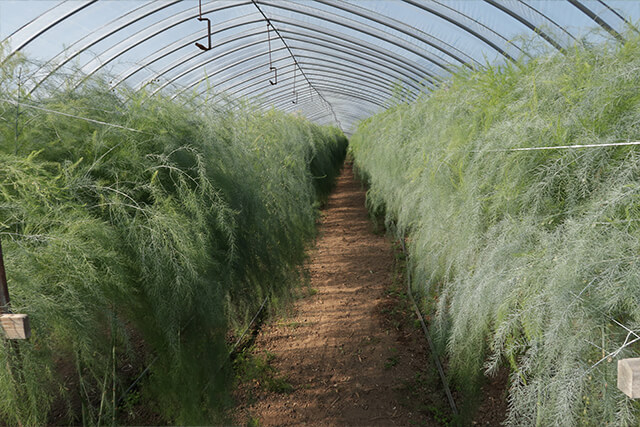
Mr. Hasegawa, a native of Hakodate, started farming 12 years ago at the age of 26.
It all started when he read a newspaper article in the dormitory of the chemical company where he worked.
The article said that there would not be enough food in the not-too-distant future as a result of the world’s population increase. I decided that if someone else had to take on the responsibility, I would do it myself.
Although his desire to become a farmer grew, Mr. Hasegawa was actually a complete beginner. He chose the town of Atsusawabe because his wife’s family lived nearby, and he received training in potato cultivation, a specialty of the town. Around that time, he met an elderly couple growing asparagus and spinach in a greenhouse. When asked, they said, “My back is hurting and I would like to hand over farming to someone else soon. They told us that they were able to inherit the greenhouses, farm equipment, and barns as they were.
It is said that 90% of asparagus is water, and the quality of asparagus is greatly affected by the quality of water used.
The water supply in Atsusawabe-cho uses subsoil water from Mt. Because of the high quality of the water, we began to focus on asparagus production,” says Hasegawa.
I had experience growing potatoes, pumpkins, and beans during my training. But asparagus was new to me. He learned to grow asparagus from an elderly couple who took over the business. In his second year of farming, he began to feel a positive response.
However,” Mr. Hasegawa recalls.
I think there are parts of farming that you can’t get into unless you understand the principles,” Hasegawa said. But at the time, I just looked up what I didn’t understand on the Internet and gathered what I could.
He was so intent on following the theory that he used pesticides, herbicides, and chemical fertilizers without even thinking about it.
For some reason, he began to feel ill more and more often.
He said, “When I sprayed pesticides, I would get sick. I felt that this was somehow not good. I made a drastic decision and stopped using pesticides.
This turned out to be a bad move, and all the above-ground stalks of asparagus died.
After quitting pesticides, the harvest plummeted, and then he met his mentor.
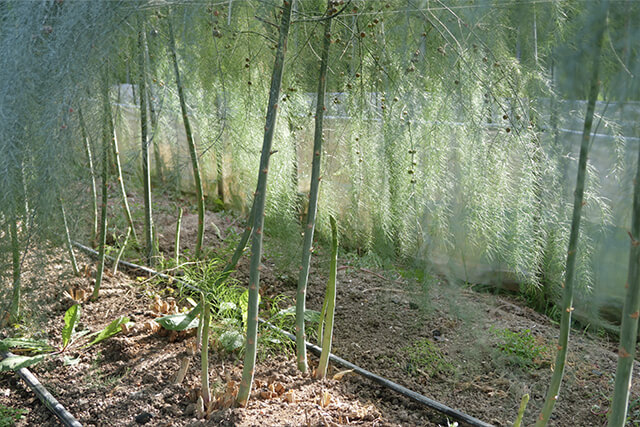
He later learned that if he was going to stop using pesticides, ” the theory was to stop using chemical fertilizers as well, and to use organic fertilizers to improve the soil environment before starting pesticides. However, at that time, Mr. Hasegawa had no way of knowing what the theory was. His personal problems, such as the hospitalization of his child, also took their toll on him, and he became mentally and physically exhausted. As the harvest volume plummeted, he was burdened with expenses and fixed costs. There were times when I relied on my wife’s parents, who live nearby,” he says.
In his third year of farming, it was also a trying time for his asparagus production.
Mr. Hasegawa, troubled by the situation, met someone through an introduction. Mr . Seiji Akii, the representative of “Miyoi Noen” who organically grows “Kuririn” pumpkins with high sugar content in the neighboring town of Mori.
He says, “My mind and body were in shambles at the time, and it was like fate had brought us together. My mentor was also a man who had been experimenting with soil cultivation. He told me to start by understanding what soil is.
He taught me that it is important to understand the soil and to maintain the existing and original environment of the field.
Mr. Hasegawa says that his mentor’s words resonated with him.
He said, “If you use chemical fertilizers, the plants will certainly grow well, but you destroy the balance of the soil. I learned from my mentor that it is not good to do that. He told me that I should care about maintaining the original environment of the soil.”
Soil is composed of mineral dust, water, and air. In addition, microorganisms live and eat organic matter. Microorganisms gather, excrete, and another microorganism eats their bodies and is eaten by another microorganism…the soil is formed through this cycle. Plants live by sucking in nutrients from the excrement and dead microorganisms decomposed by the surrounding microorganisms. He learned that soil is made up of the workings of nature, and he continued to struggle to put this into practice.
He says that by following his master’s teachings and knowing and cultivating his own fields, he was able to create fertile and strong soil.
The asparagus no longer get sick,” he says. The yield also made a V-shaped recovery. I remember feeling relieved at the time that we had somehow managed to get our peelings back on the same page.
Fate continued to bring him opportunities to share the taste of the asparagus he had poured his heart and soul into.
One of my acquaintances who tasted the asparagus I harvested said, ‘Delicious! I was so happy to hear that. He introduced me to the chefs at two restaurants in Meguro Ward : “Ri Carica” in Gakugei Daigaku and “mondo” in Niyugaoka.
The two restaurants liked Mr. Hasegawa’s asparagus and introduced it to their menus. The reputation of “Mr. Hasegawa’s asparagus” spread among Italian chefs, and now there are inquiries from popular restaurants regardless of genre.
To deliver delicious asparagus in its best condition
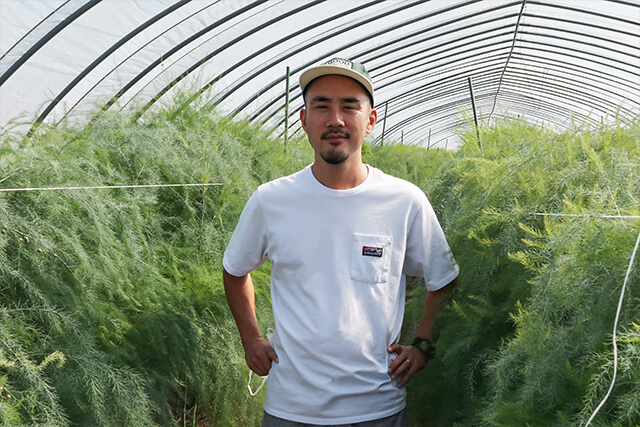
As a grower, Mr. Hasegawa has always been searching for ways to produce delicious asparagus. He says that in the past, he used to take a forward-looking stance, saying, “I’m going to produce delicious asparagus︕. He says that his forward-looking stance has changed over the years.
Now I want to think about how to draw out the power of the field and how to reflect the power of the soil in the asparagus, and continue to grow asparagus that is “unique to our field.
Mr. Hasegawa is going back to the basics of agriculture, which is “subtractive” farming, where unnecessary things are eliminated rather than adding something new. I want to not only produce delicious products, but also make sure that people eat them in their best condition. He says that he would like to think about storage and distribution as well.
Asparagus that are picked in the morning are immediately put in the refrigerator and chilled for two hours before being cut and packed in bags. After cutting, the asparagus is kept in the refrigerator again until the delivery company arrives to keep it fresh. Unlike potatoes and other vegetables, which become sweeter when the temperature rises, asparagus lose sugar when the temperature rises. The secret to keeping asparagus tasty is not to leave it at room temperature, but to keep it in a state of suspended animation at a temperature close to 0°C, so that as much sugar as possible is not consumed. The asparagus is also delivered “standing up” to keep it fresh.
We want our asparagus to be in its best condition for both three-star restaurants and the average homeowner,” he says.
Jet Farm is celebrating its 10th anniversary. They will continue to weave the workings of the earth, sparing no effort to produce delicious asparagus that will bring enjoyable meals and happy times.

Jet Farm’s asparagus, nurtured by the subsoil water from Mt. With just the right amount of sugar, moisture, flavor, and soft skin, our asparagus can be boiled, grilled, or fried. Please enjoy them as much as you like! Spring asparagus, with its low sugar content, can be used in all kinds of cooking methods and menus, while summer asparagus can be grilled for a deeper flavor. We will do our best to make your mealtime more enjoyable!



